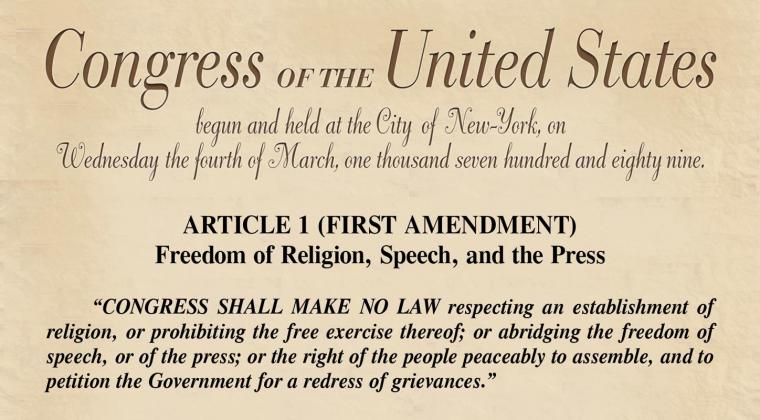KNOW YOUR RIGHTS: Article 1, United States Bill of Rights
The First Amendment prohibits the making of any law respecting an establishment of religion, impeding the free exercise of religion, abridging the freedom of speech, infringing on the freedom of the press, interfering with the right to peaceably assemble or prohibiting the petitioning for a governmental redress of grievances. Initially, the First Amendment applied only to laws enacted by Congress, and many of its provisions were interpreted more narrowly than they are today.
In Everson v. Board of Education (1947), the Court drew on Thomas Jefferson’s correspondence to call for “a wall of separation between church and State”, though the precise boundary of this separation remains in dispute. Speech rights were expanded significantly in a series of 20th- and 21st-century court decisions that protected various forms of political speech, anonymous speech, campaign financing, pornography, and school speech; these rulings also defined a series of exceptions to First Amendment protections.
The Supreme Court overturned English common law precedent to increase the burden of proof for libel suits, most notably in New York Times Co. v. Sullivan (1964). Commercial speech is less protected by the First Amendment than political speech, and is therefore subject to greater regulation.
The Free Press Clause protects publication of information and opinions, and applies to a wide variety of media. In Near v. Minnesota (1931) and New York Times v. United States (1971), the Supreme Court ruled that the First Amendment protected against prior restraint – pre-publication censorship – in almost all cases.
The Petition Clause protects the right to petition all branches and agencies of government for action. In addition to the right of assembly guaranteed by this clause, the Court has also ruled that the amendment implicitly protects freedom of association.

